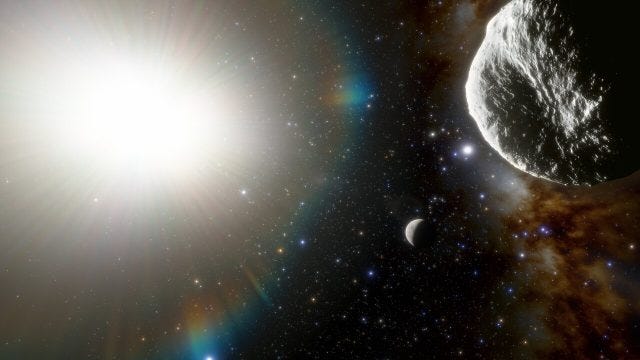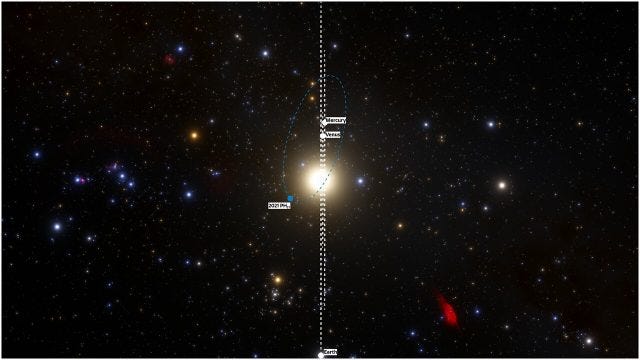Fastest Asteroid Discovered: A Glimpse into the Cosmos
Written on
Chapter 1: Unveiling 2021 PH27
Recent astronomical observations have unveiled an intriguing asteroid, distinct from others often highlighted due to their potential threat to Earth. The asteroid designated as 2021 PH27 maintains a safe distance from our planet, yet its orbit brings it astonishingly close to the sun. Researchers from the Carnegie Institution of Science have revealed that 2021 PH27 holds the title for the fastest known asteroid, completing its solar orbit in a mere 113 days.
This remarkable discovery was facilitated by the Dark Energy Camera (DECam), which operates within the 4-meter Victor M. Blanco telescope located in Chile. Initially, DECam's focus was on distant galaxy clusters, but it recently shifted its gaze closer to find objects like 2021 PH27. DECam is renowned for its exceptional performance as a charge-coupled device (CCD) imager, making the detection of PH27 a noteworthy achievement.
Following its initial observation, additional instruments honed in on this approximately one-kilometer-wide asteroid. While a collision with Earth would pose significant risks, calculations of its orbit indicate that PH27 primarily comes near Mercury and Venus. With its rapid speed, it completes an orbit around the sun every 113 days, making it the fastest asteroid recorded—only slightly slower than Mercury, which orbits the sun in 88 days. However, Mercury's orbit is considerably tighter compared to PH27's more elongated path.

At its closest approach, PH27 reaches about 12.4 million miles (approximately 20 million kilometers) from the sun, a distance that surpasses Mercury's proximity of 29 million miles (47 million kilometers). During these close encounters, temperatures on the surface of PH27 can soar to around 900 degrees Fahrenheit (500 degrees Celsius).
Scott Sheppard, the astronomer who first observed 2021 PH27, suggests that the asteroid's orbit may not be stable in the long run. It is projected that in about a million years, PH27 could collide with either Mercury, Venus, or even the sun. Alternatively, it might receive a gravitational nudge from one of these celestial bodies, potentially ejecting it from the solar system entirely.
The origins of PH27 remain uncertain. If it is a typical asteroid, it likely originated from the asteroid belt between Mars and Jupiter. However, its orbital inclination of 32 degrees away from the solar system's plane indicates it might be an ancient "extinct" comet from the outer solar system. Future observations scheduled for the coming months could provide more insights into its nature.
In the video titled "First Interstellar Asteroid Wows Scientists," experts delve into the significance of this discovery, exploring how it expands our understanding of asteroids and their behavior in our solar system.
Chapter 2: The Implications of 2021 PH27
As scientists continue their research, they are also looking into the potential impacts that such fast-moving asteroids could have on our understanding of the solar system. The implications of this discovery stretch beyond just the asteroid itself; they may provide clues about the formation and evolution of other celestial bodies.
In the video "Old Data & New Discoveries: How 'THOR & Computational Astronomy' Discovered 27,500 Asteroids," researchers discuss the advanced techniques and historical data that contributed to uncovering the secrets of countless asteroids, including the remarkable 2021 PH27.

As we explore the cosmos, discoveries like 2021 PH27 remind us of the dynamic nature of our solar system and the constant evolution of our understanding of space.